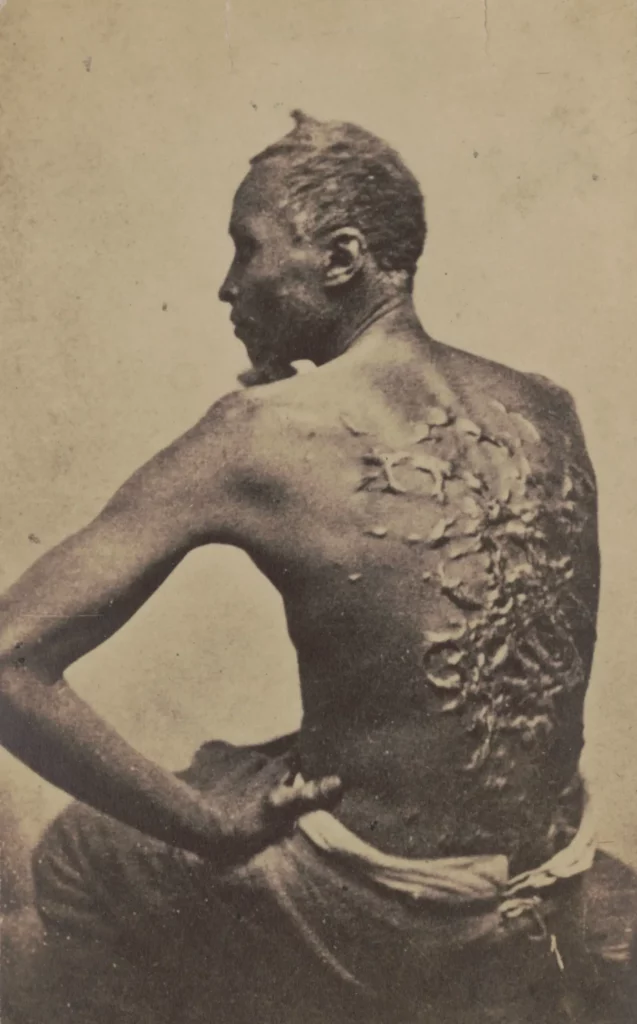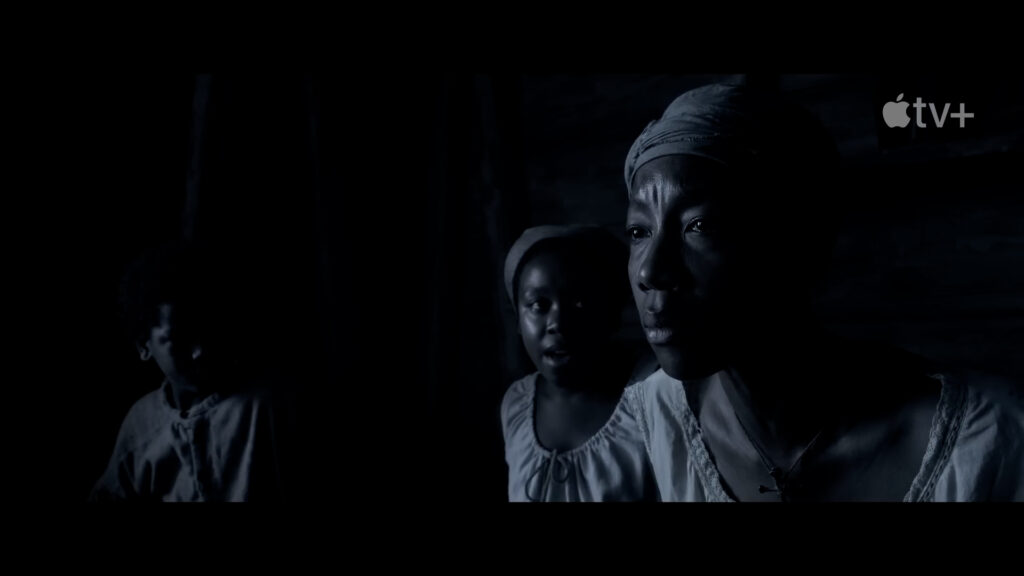Interview by Paul Salfen
Emancipation tells the triumphant story of Peter (Will Smith), a man who escapes from slavery, relying on his wits, unwavering faith and deep love for his family to evade cold-blooded hunters and the unforgiving swamps of Louisiana on his quest for freedom. The film is inspired by the 1863 photos of “whipped Peter,” taken during a Union Army medical examination, that first appeared in Harper’s Weekly. One image, known as “The Scourged Back,” which shows Peter’s bare back mutilated by a whipping delivered by his enslavers, ultimately contributed to growing public opposition to slavery.
Apple’s groundbreaking film Emancipation scored five NAACP Image Award nominations, including Outstanding Motion Picture. There is still time to cast your vote in categories that include Outstanding Motion Picture, Outstanding Actor in a Motion Picture and Outstanding Ensemble
Emancipation sweeps audiences into a breathless, near-impossible escape. This propulsive, visually mesmerizing thriller takes off on a chase through the tangled swamps of Louisiana, across the apocalyptic battlefields of the Civil War—and into the most haunting, still-reverberating chapter of American history. But at its core lies a tale of pure urgency: one man’s steely, soulful quest to set himself — and the family he loves more than anything — free. Inspired by the true story of the man known to historians as “whipped Peter,” Emancipation begins as Peter is torn from his loved ones and transported to a Confederate labor camp to build a deadly weaponized railroad. Confronted with staggering brutality, then buoyed by rumors that President Lincoln has ended slavery, he decides to make a break for it. His aim is to make it all the way to Union forces in Baton Rouge. With a ruthless bounty hunter tracking his every move, hounds on his heels, alligators in the maze-like bayou, and hazards of war raging all around, the odds could not be more against him. He has no weapons, no food, no map. All Peter has on his side is an immense spirit of grit, along with a profound internal faith, and the conviction of his own humanity.
From the start, director Antoine Fuqua, cinematographer Robert Richardson and a cast led by Will Smith, set out to create an immersive, 360-degree experience with Emancipation. They envisioned dropping audiences directly — and viscerally — into this highest-of-stakes journey side-by-side with Peter—forging a gripping inside view of a world that more often seems long ago or unimaginable. It would take a physically, artistically, technically, emotionally, and spiritually challenging production to achieve this goal. But they all felt the story asked for everything they had. The hope was to not only recreate a spellbinding legend, but one that pays homage to the more than 100,000 Americans who became fugitives and freedom-seekers boldly fleeing from enslavement. As a rousing action epic, the story’s raw immediacy contrasts starkly with the multiple-storyline historical dramas that typically characterize Civil War-era movies. Emancipation” doesn’t shy away from the dark psychological mechanics of enslavement, the quelling of cultural identity, or the divisions tearing apart the nation. They are simply part of Peter’s moment-to-moment reality as he taps into the depths of his courage and determination to make a mad dash towards liberty. This vivid point of view is what drew both Fuqua and Smith to the project. The past, it has been said, is a foreign country. But they saw Emancipation as a chance to make the past feel present and alive, speaking to our current crossroads through Peter’s sheer drive to out-run hatred and control.
“I never wanted to make a period film about slavery,” Smith notes. “I’ve avoided those roles my whole career. But the design and structure of Emancipation is that of a modern action thriller, which is not what anyone thinks of when you think of films set in this period. The textures and flavors are unlike anything you’ve seen before and that gives a whole new perspective. Antoine and I both wanted to create a movie about a man empowered by a mindset of freedom, faith, love, and believing you can be invincible.”
Smith’s initial excitement, which propelled the film’s development, gave way to a tireless intensity on set. Through nearly every frame of the film his character is under extreme pressure. Peter is tested on every level, confronted equally by the indifference of wild nature and the remorselessness of humans at their worst, yet he uses this to stoke his faith and resolve further. Smith leaned into that. “Without question this was the hardest film of my career,” he shares. “It was searing hot, a hurricane tore down our sets, I was in the swamp every day. But when you’re telling a true story like this, there’s a huge energy you get from the meaningful purpose of sharing an incredible human life with others.”
Fuqua, too, found the POV compellingly fresh, giving him the chance to present an American odyssey of a type that has never been seen. He envisioned the film joining the pantheon of high-wire, breakneck chase movies fueled by defiance—from The Great Escape to Mad Max: Fury Road. Yet this chase also races straight through America’s contradictions — its repression, brutality, and racism dueling with its traditions of daring, strength of character, and abject heroism. “I’ve long wanted to tell a story about the inhumanity of slavery,” comments the director. “But what excited me is that Emancipation is also a beautiful love story about our people and it’s a story of triumph. I wanted audiences to see the truth but then to walk away inspired.” Much as Fuqua was fired up for the production, the vast logistical and emotional scale of it took him to the far edges of directorial commitment. It allowed him to deploy every tool in the filmmaking arsenal, from an inventive tonal palette to intricately choreographed long shots. But at times, he questioned his sanity. “I knew the filming was going to be an adventure—but when you’re actually in the middle of it, you’re wondering, ‘What was I thinking, taking all this on?’ Whenever those moments of doubt arose, Fuqua found that Smith’s perseverance and optimism kept him grounded. He could sense something indomitable developing in the actor’s expression, the look of a man whose spirit could never be contained by shackles, punishment, or anyone’s dogma. “We’ve never seen Will play a character that takes him to the depths like this,” Fuqua says. “It was amazing to see him take this challenge on with such ferocity and heart.”

Library of Congress
A Human Story Overlooked: The Photograph Emancipation began with an arresting photograph that may have been one of the first in history to go viral — an image from the early days of visual storytelling that showed slavery for what it was, challenged bigotry, and proved that a picture had the power to change even the most stubborn of minds. This was the portrait known as “The Scourged Back,” taken by New Orleans-based photographers William McPherson and J. Oliver in March 1863. The man depicted became known as “whipped Peter,” or sometimes by his given name as an enslaved person, Gordon. In the portrait, Peter sits, hand on hip, riven with a crisscrossed map of keloid scars from a whipping by a plantation overseer, an act of abuse which Peter said left him in bed for two months. The photo was published in Harper’s Magazine and was circulated fervently around the country by abolitionists, sparking outrage and debate. Unlike written accounts of slavery, which all too often were dismissed as unverifiable, the photograph’s truth stared people in the face. There could be no denial. Of the photo, the newspaperman Theodore Tilton wrote in 1863, “[It] should be multiplied by the hundred thousand and scattered over the states…If seeing is believing — and it is in the immense majority of cases — seeing this card would be equivalent to believing things of the slave states which Northern men and women would move heaven and earth to abolish!” Today the portrait, its impact undiminished, is displayed in the Smithsonian’s National Portrait Gallery. But the photo would not have existed at all were it not for Peter’s bravery and fortitude, which got him to Baton Rouge in the first place. Shortly before the picture was taken, as Harper’s Magazine reported in the story, Peter had pulled off an incredible escape from John and Bridget Lyons’ large cotton and onion plantation in St. Landry Parish on the Atchafalaya River. For ten days, he was on the run, dogs and human hunters at his back, disguising his scent and navigating the treacherous bayou. Outwitting them all, Peter finally reached the Union camp at Port Hudson, where he was, at last, a free man. He then signed up to serve as a soldier in the Louisiana Native Guard, the official Black regiment of the Union Army, in a bid to free others. Perhaps the peril of the famous photo is that in seeing Peter purely as a symbol, the fullness of his humanity can be lost. That was something that struck ‘Emancipation’ producer Joey McFarland, who initiated the film project in 2018. He wanted to give new and lasting life to Peter’s legend. “I felt the human story behind the photo had been overlooked,” McFarland explains. “I wanted to know so much more. What was this man’s journey? How did he escape? Who was his family? What motivated him? Looking at the photo in that context, I saw a hero. I saw a warrior who went against the grain and refused to have his dignity taken from him.” McFarland worked with screenwriter William N. Collage to develop a screenplay that broke the mold. Swerving a full 180 from somber period dramatics, Collage instead wrote a piece of feverishly sustained tension. The script stayed close-in with Peter as he races through human and natural jeopardy yet keeps moving forward no matter what. “My hope was for the audience to feel all that Peter does — the momentum, terror and exhaustion, the moments of exhalation, the sorrowful costs as well as the hope and elation,” Collage shares. Producer Todd Black, who has previously made films with both Fuqua and Smith, was thrilled to see them come together for “Emancipation.” “This is a story best approached through the heart,” Black says. “As you watch Peter battle non-stop to survive, your heart is pounding because you need him to make it. And that heartbeat keeps you engaged as you’re exposed to all that Peter sees and experiences.”

